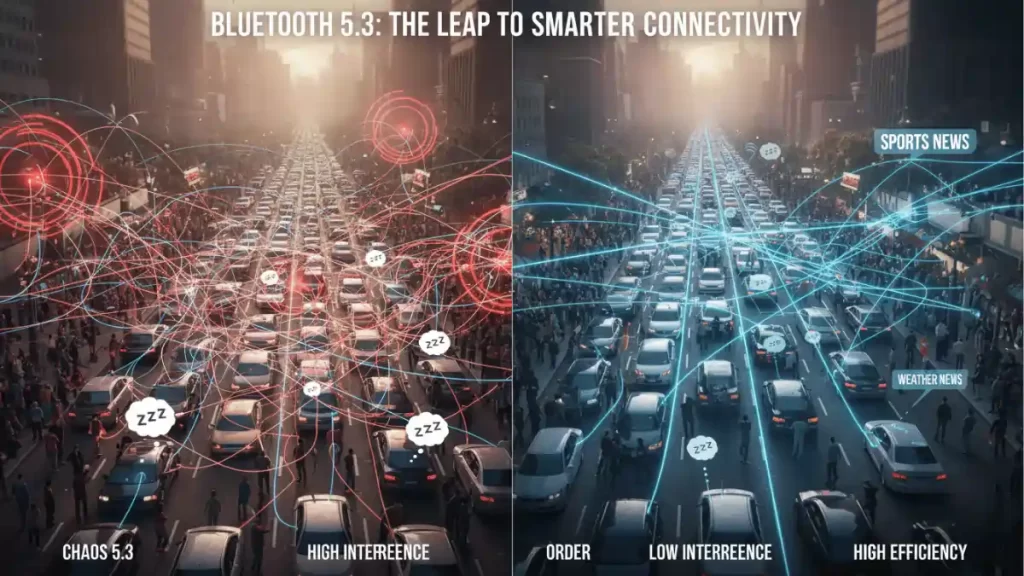
Definition: A short-range wireless standard for audio and data. Version 5.3 improves reliability and power use compared to older versions and supports features like LE Audio on compatible devices. Actual range and stability depend on antennas, interference, and codecs used.
Bluetooth 5.3 is the latest version of the Bluetooth wireless communication standard, offering several enhancements over its predecessors. Here’s a breakdown to help you understand it better:
Core Concept: Bluetooth is a short-range wireless technology that allows devices to communicate with each other over a small distance without cables. Think of it as a way for your phone to talk to your headphones, smartwatch, or car’s infotainment system.
Key Features of Bluetooth 5.3:
Bluetooth 5.3 focuses on improving efficiency, security, and the overall user experience, particularly for low-power devices. Here are some of its most notable features:
Periodic Advertising Enhancements:
- What it does: In Bluetooth Low Energy (LE), devices can periodically “advertise” their presence and data to other devices. Bluetooth 5.3 refines this process.
- Benefit: It allows advertising devices to provide more information about the data they’re sending, enabling receiving devices to filter out unnecessary data more efficiently. This saves power for both the sender and receiver.
- Analogy: Imagine someone shouting out “I have news!” repeatedly. With 5.3, they can shout “I have sports news!” or “I have weather news!” so you only listen if you care about that specific topic.
Encryption Key Size Control Enhancement:
- What it does: This feature gives the host (e.g., your phone) more control over the encryption key size used for secure connections.
- Benefit: It allows for more robust and secure connections, especially important in applications where data privacy is critical. It helps ensure that devices use the strongest possible encryption supported by both ends.
Connection Subrating:
- What it does: This is a big one for power efficiency. It allows devices to quickly switch between low-duty cycle (sleep) and high-duty cycle (active) states during a connection.
- Benefit: When your Bluetooth headphones are playing music, they need a high data rate. But when the music pauses, they can quickly drop into a very low-power state and only “wake up” briefly to check if anything’s happening. This significantly reduces power consumption, extending battery life for devices like wearables and earbuds.
- Analogy: Instead of staying fully awake and alert all the time, your device can take frequent naps and only fully wake up when there’s important work to do.
Channel Classification Enhancement:
- What it does: This improves the adaptive frequency hopping (AFH) mechanism in Bluetooth LE. AFH helps Bluetooth devices avoid interference by dynamically changing the channels they use.
- Benefit: With 5.3, the host can provide more detailed information about bad channels to the controller, leading to more intelligent and effective channel selection. This results in more reliable connections and less interference, especially in busy radio environments.
How it impacts you (the user):
Future-Proofing: Devices with Bluetooth 5.3 are better equipped to handle upcoming advancements and applications that demand efficiency and reliability.
Longer Battery Life: Expect your Bluetooth earbuds, smartwatches, and other LE devices to last longer on a single charge due to Connection Subrating and improved advertising.
Improved Reliability: Fewer dropouts and more stable connections, even in crowded environments, thanks to better channel classification.
Enhanced Security: More robust encryption capabilities for sensitive data.
Example: Pairing earbuds that support Bluetooth 5.3 for fewer dropouts on a commute.
Also called: BT 5.3
Related: Stereo speakers, Wi-Fi 6E
